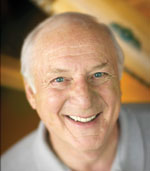Proficient Pilot
Behind the curve
 The expression "behind the curve" apparently has to do with being on the left side of the so-called bell curve, the type of curve that many teachers use to issue grades. Being behind the curve also refers to something or someone unable to keep up with the norm. It wouldn't surprise me, though, if the expression originated in aviation, where flying behind the power curve can have serious and sometimes fatal implications. Unfortunately, some of us do not understand what to expect when operating an airplane on the back side of the power curve.
The expression "behind the curve" apparently has to do with being on the left side of the so-called bell curve, the type of curve that many teachers use to issue grades. Being behind the curve also refers to something or someone unable to keep up with the norm. It wouldn't surprise me, though, if the expression originated in aviation, where flying behind the power curve can have serious and sometimes fatal implications. Unfortunately, some of us do not understand what to expect when operating an airplane on the back side of the power curve.
My first eye-opening experience with the power curve was provided by Hunter Blackwell, a factory test pilot who checked me out in a new Helio Courier Mark II (N6310V) at Hanscom Field in Bedford, Massachusetts, in 1968. He wanted to ensure that I understood the potential consequences of improperly decelerating on short final approach to the airplane’s incredibly low touchdown speed.
During cruise flight, he had me gradually slow the airplane while maintaining altitude. This resulted in reduced parasite drag and corresponding power reductions. Eventually, though, we got to a speed where power was at a minimum and further speed reductions required adding power to hold altitude, the result of increasing induced drag. The lower the airspeed, the more power I needed to maintain altitude. Because the Helio Courier does not stall in the conventional sense, the lowest airspeed attainable was determined by the amount of available power. In other words, both minimum and maximum airspeeds were power limited. He then had me perform the same exercise with the flaps and leading-edge slats extended. With full throttle, the Helio could be held at an incredible 24 knots. We presumably could have flown more slowly with a more powerful engine. This demonstrated the effect of the power curve.
An airplane is on the front side of the curve when reducing airspeed requires reducing power. This is referred to as the “region of normal command.” To reduce airspeed further, the pilot must add power. He is on the back side of the power curve, a regime of flight known as the “region of reverse command.” The point where minimum power is needed to maintain altitude is the dividing point between the front and back sides of the curve. This is when parasite and induced drag are approximately equal. Parasite drag predominates on the front side of the power curve, and induced drag predominates on the back side.
Remember that although parasite drag varies in proportion to the square of the airspeed, induced drag is just the opposite. It varies inversely with the square of the airspeed. When airspeed is halved, parasite drag decreases by 75 percent but induced drag quadruples; when airspeed is doubled, parasite drag increases fourfold but induced drag decreases by 75 percent.
Another characteristic worth noting is that an airplane is speed stable on the front side of the power curve. This means that if the airplane is trimmed for, say, 120 knots and the pilot pulls the control wheel slightly aft, airspeed will decrease. As soon as he relaxes back-pressure on the wheel, however, the nose will eventually return to about where it originally was, and the airplane will resume its trimmed airspeed of 120 knots.
If an airplane is trimmed to 60 knots and is on the back side of the power curve, pulling back on the control wheel still causes airspeed to decrease. When the pilot releases back-pressure, however, the airplane will not return to its trimmed airspeed of 60 knots. Instead, airspeed will continue to erode, another reason why the area behind the power curve is called the region of reverse command. Airspeed behavior is contrary to what pilots have learned to expect.
Although the Helio Courier is designed for STOL (short takeoff and landing) operations, a similar demonstration of the power curve can be made in most other airplanes. Without actually experiencing such a demonstration, the concept of operating on the back side of the power curve is largely academic, and a pilot cannot fully appreciate the grief he could encounter when inadvertently and unexpectedly flying on the back side of the power curve.
Assume, for example, that a pilot is approaching to land and notices that his airplane is drifting below the glideslope (electronic or visual). He attempts to reduce sink rate only by raising the nose. Airspeed obviously will decrease in the process. (This also can occur insidiously when descending through a decreasing-headwind type of wind gradient, or more dramatically in a wind shear.) The pilot recognizes the airspeed reduction and adds power but not sufficiently to arrest the speed bleed. Before he realizes it, the airplane has entered the back side of the power curve. Sink rate will increase and pulling farther back on the control wheel will have no effect other than to further reduce airspeed and increase sink rate, a situation that could have been avoided by a greater, more timely application of power.
Once behind the curve, a pilot must aggressively add power and simultaneously lower the nose to increase the airspeed required to return to the front side of the power curve. Hopefully he has the height needed to do this safely, otherwise the result can be an embarrassingly hard landing—more common than you may realize—or worse, and that would be a real drag.
Visit the author’s website.


